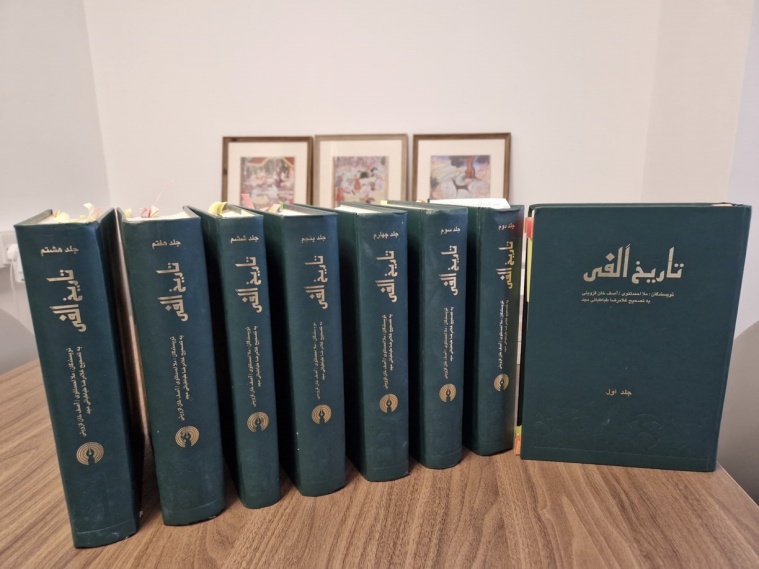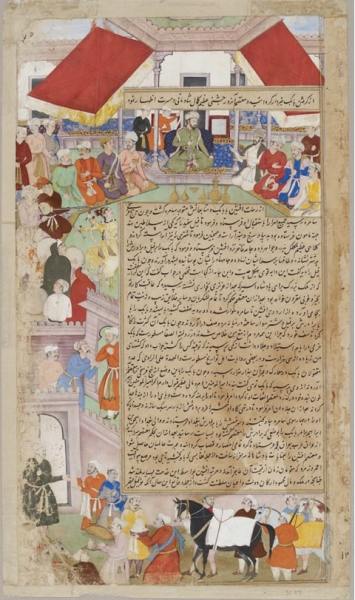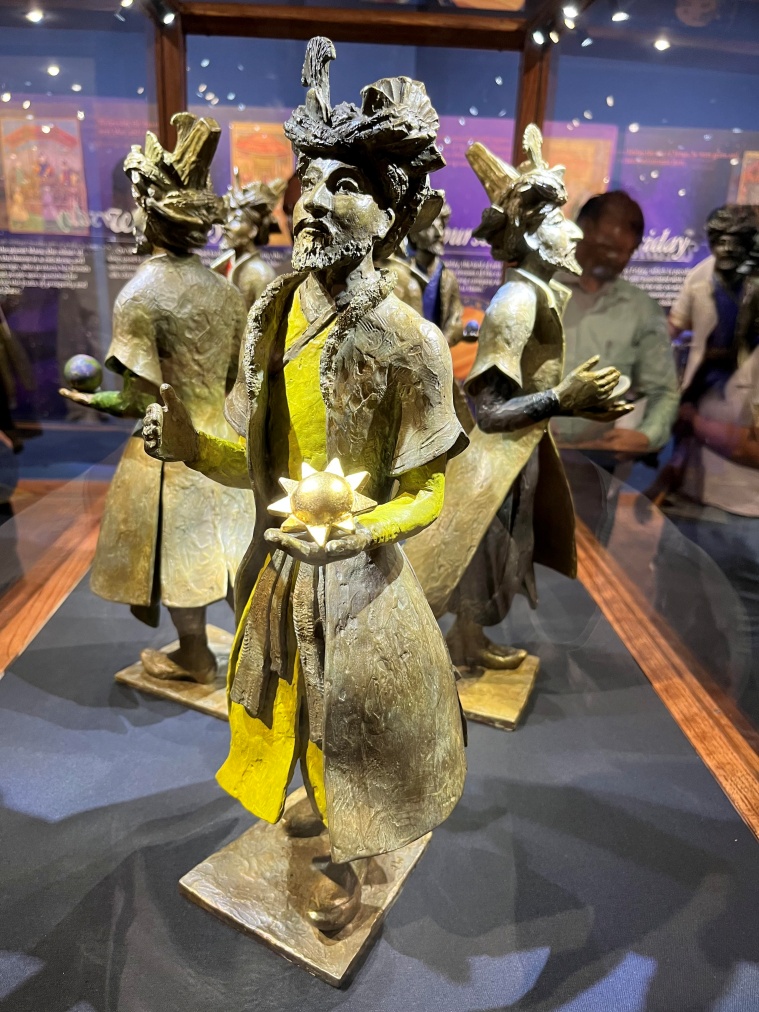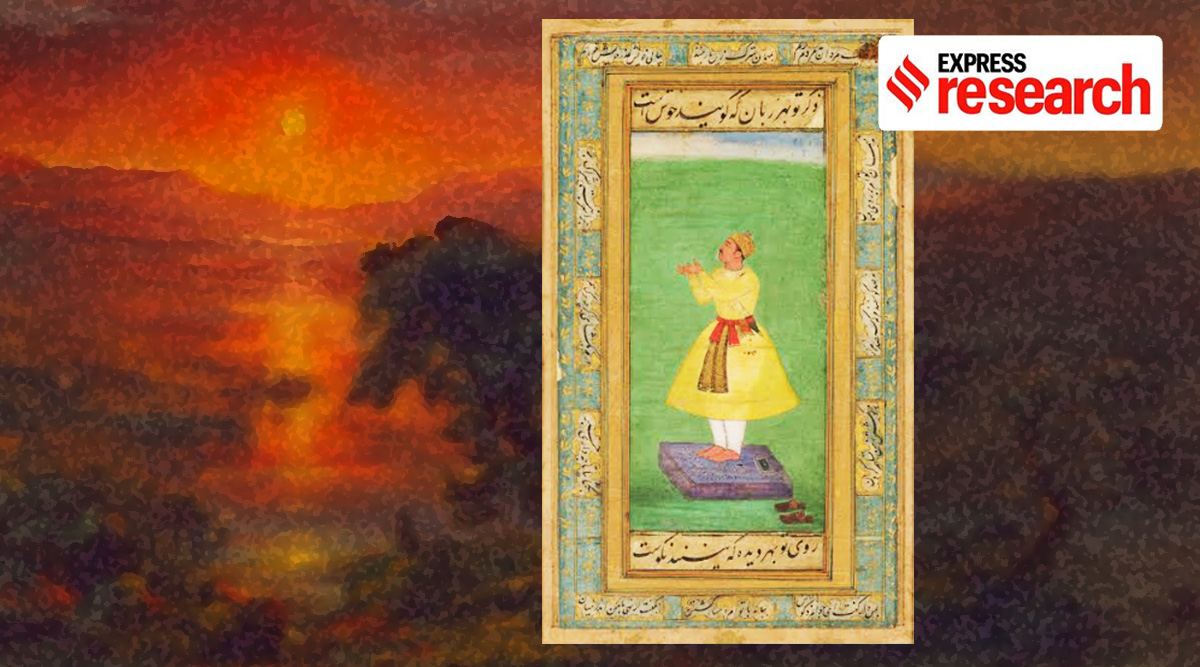In 1582-83, Mughal emperor Akbar commissioned a group of scholars to write a special piece of work — a new history of the world. The Tarikh-i Alfi or the ‘History of the Millennium’ as it came to be known was to commemorate the first Islamic millennium that would soon come to a close. Cambridge historian Said Reza Huseini came across this eight-volume work in Persian while he was completing his postgraduate studies at the Jawaharlal Nehru University (JNU) in New Delhi. He says this rich body of work, that remains untranslated, is hardly known about. “It is completely overshadowed by the Akbarnama (the official chronicle of Akbar written by his court historian Abul Fazl)… The question I asked to myself was, why were the Mughals in India writing a history of the world?”
The answer lay, Huseini realised soon afterward, in a philosophical tradition that swept through empires across the globe and particularly the Islamic world in the 16th century, and had its roots in the Hellenistic Mediterranean. Neoplatonism, as it came to be called, was a strand of Platonic philosophy conceived by Greek philosophers of the first centuries CE such as Plotinus, Porphyry, Proclus, and Iamblichus. The philosophy was particularly appealing to rulers who governed over vastly diverse populations and allowed them to find justification for their authority in something that was not rooted in any particular religion.

Akbar’s imperial policy is often understood as the first step towards modern secularism. More recently, a group of scholars including historians Jos Gommans, Ebba Koch, Mathew Melvin-Koushki, and Huseini among others has demonstrated that Akbar’s famous idea of Sulh-i Kull or ‘Peace for All’ is derived from this ancient Hellenistic ideal of an Alexander-like philosopher-king.
 Eight volumnes of Akbar’s Tarikh-i Alfi or History of the Millennium. (Library of Said Reza Huseini)
Eight volumnes of Akbar’s Tarikh-i Alfi or History of the Millennium. (Library of Said Reza Huseini)
The Mughal emperor’s Tarikh-i Alfi is perhaps the most telling account of how Akbar implemented Neoplatonism in his policies. Leiden University historian Jos Gommans along with Huseini in their article Neoplatonic kingship in the Islamic world explains that the Tarikh-i Alfi, in a radical move, declared the end of the first Islamic millennium. “It skipped over the Prophet Muhammad to announce the coming of Akbar as saviour with a new covenant of universal peace.” It upheld the king as the divine force and rejected the old Prophetic religion “for introducing religious differences and violence.”
The popularity of Hellenistic Neoplatonism in the Islamic world
There is no easy way to understand the concept of Neoplatonism. But to put it simply it is an esoteric and cosmological belief that power emanates from the one supreme being and seeps down through layers of the intellect into the soul. Although most of this philosophical concept is known to have taken birth in the eastern Mediterranean during Late Antiquity, it absorbed similar monistic ideologies that existed in other parts of the world.
“This Hellenistic legacy is not all European,” explains Gommans. “The so-called founder of Neoplatonism, Plotinus, who considered himself to be Plato’s main successor, was born in Egypt and wanted to study philosophy in India,” he says.
“For Neoplatonism, interaction with India has always been important as it shares its monist characteristic with Advaita Vedanta philosophy and also, in other ways, with various Tantric traditions. So, throughout the centuries there are many Indian entanglements, mostly via the Islamic world, that contributed to the making of Neoplatonism,” Gommans says, adding that “many scholars do not realise that Neoplatonism became the default form of philosophy in the Islamic world.”
This philosophy was particularly appealing to rulers of large empires in the medieval period because of its ability to make kingship universal, that is beyond any particular religion. “In the religious idea of power, such as that in Islam, there is no kingship,” says Huseini. He explains that in Islam there is God who is known to send Prophets to ensure that people follow the path devised by him. “The successors of the Prophet are known as Caliphs, not sultans or kings. The Caliphs cannot claim the legitimacy of power from anything apart from the Prophet.”
Neoplatonism provided justification for a universal sacred kingship that existed beyond all particular religions, including Islam and Hinduism. Gommans and Huseini in their work explain that “Neoplatonic kingship is thoroughly monist and as such goes beyond any specific religious denomination, and is in fact perfectly able to incorporate any of them.” It is also deeply personal because in this understanding of power it is only the king who, through divine intervention, becomes the living law and consequently is able to overrule the authority of prophets, jurists, theologians, and ritualists. In such a situation, the king himself was seen as a saviour or messiah. This understanding of power was especially useful to conquerors of vast domains with diverse religious communities, who were in need of a universal ideology of kingship rather than one that is backed by any particular religion.
Gommans and Huseini suggest that while Neoplatonism was appealing to rulers at all times in both the western and eastern parts of the post-Hellenistic world, it became particularly fashionable during a global renaissance that characterised both Europe and the Islamic world from about 1450 to 1650 CE. During this period, kings attempted to emancipate themselves from religious authorities, be it through the Reformation in Europe or through other forms of religious renewal in the Islamic world.
Interestingly though, in Europe, Neoplatonism’s political dimension always remained quite marginal. Neoplatonism was mostly implemented in the arts rather than in any imperial policy. One reason for that, as Gommans and Huseini explain, could be that by 1200 CE, Europe had started losing interest in Plato in favour of Aristotle. “Moreover I would suggest that due to the so-called scientific revolution in Europe from the late 16th century onward, there followed a process of disenchantment in which philosophies like Neoplatonism became considered superstitious and weirdly occult,” explains Gommans.
 Folio from the Tarik-i Alfi (National Museum of Asian Arts)
Folio from the Tarik-i Alfi (National Museum of Asian Arts)
In the Islamic world, Neoplatonic philosophy acquired popularity on two major occasions. First, there was the Graeco-Arabic translation movement that took place between the mid-eighth century and the 10th century. During this period a large corpus of Greek texts written by Hellenistic scholars were translated into Arabic in Baghdad. Neoplatonic texts of Plotinus and Proclus were translated and read widely in the Islamic world during this period.
But the more important moments for Neoplatonism were the Mongol conquests of the 13th and 14th centuries, creating what is still considered the largest contiguous empire in the pre-modern era, stretching from Mongolia in East Asia to parts of Eastern Europe, going northwards as far as the Arctic and extending eastwards and southwards into parts of the Indian subcontinent. “In the Mongol belief of power, Chinggis Khan was created of pure light like the sunlight radiating over the whole empire, and that God had given him the right to conquer and rule the world. In such a situation, no other king can claim to be legitimised by God,” explains Huseini. This rationale was used by the Mongols in their ruthless attack of the Abbasid Caliphate on Baghdad in the 13th century, which led to the death of the Abbasid Caliph, al-Musta’sim. “Hence,” Gommans adds, “since Europe was saved from the Mongol invasions, it also missed the revival of Neoplatonism as a political force”.
Once in power, the Mongols realised the huge religious diversity of the lands they were ruling over. On encountering the Neoplatonic philosophy that was already being widely read and followed in the Islamic world by scholars such as Nasir al-Din al-Tusi, Shihab al-Din Yahya ibn Habash Suhrawardi, and Fakhr al-Din al-Razi, the Mongols found in it the imperial ideology they needed to rule such a large and diverse empire. “When you create a world empire, you need a universal ideology, which Neoplatonism provided,” says Huseini. Consequently, the Pax Mongolica respected and protected all religions as long as they regarded the Mongolian Khan as their supreme ruler.
The Mongol conquests thereby made Neoplatonism the most favoured political philosophy in the Islamic world. Gommans explains that it became particularly popular among the Persianate successor empires of the Mongols such as the Safavids in Iran, the Mughals, and the Deccan sultanates. “Kings wanted to be independent from the ulama,” he says. “At the very moment Akbar wrote his millennial history, an official announcement was made that he would be the supreme authority on all religious issues, thus overruling the ulama… Very much like his Mongol ancestor Chinggis Khan, Akbar considered himself to be a universal prophet-philosopher-king beyond all religions”.
Neoplatonism in the Mughal Empire
Given how popular this philosophy was in the Islamic world, one would be curious to know how it influenced the imperial policies of the other Mughal rulers. Art historian and author Ebba Koch says that “at that point in time Neoplatonism was a trend in fashion. How far the Mughal rulers were actually aware of Neoplatonic philosophy is a matter of debate.” She believes it was a latent strand in Islamic thinking which had Neoplatonic characteristics.
Koch says that if one were to look at Babur, there is very little philosophical leaning in his writings and other works. “Baburnama is quite down to earth,” she says. But the writings of Babur’s contemporaries and companions suggest that they compared him to the sun.
Scholars suggest that the writings of Plato and Neoplatonic writings are replete with references to the sun as the God and that it represents truth and knowledge. “Humayun, Jehangir, and Shah Jahan all represented themselves as the sun to raise the status of kingship to semi-divine level,” reminds Koch.
Also from Express Research | When Mughal rulers borrowed from Christianity to produce exquisite art works
As far as Humayun was concerned he organised his court according to planetary relationships and there was a special emphasis on the sun. Koch in her book, ‘The Planetary King: Humayun Padshah, Inventor and Visionary on the Mughal Throne’, explores the Mughal emperor’s interest and obsession with astronomy and cosmology, which was very much part of Neoplatonic thought. “He was intimately connected and aware of the knowledge systems of his times. He sought cultural exchange with other scholars and would have referred to the writers who attempted to combine Greco-Roman philosophy with Quranic law and thinking.”
 Exhibition of the sculptures ‘Seven Humayuns: Planets, Astrology and Padshad’ by sculptor Jill Watson at the India International Centre Annexe. (Adrija Roychowdhury)
Exhibition of the sculptures ‘Seven Humayuns: Planets, Astrology and Padshad’ by sculptor Jill Watson at the India International Centre Annexe. (Adrija Roychowdhury)
Koch also highlights how Shah Jahan used the iconography of the Greek mythological figure Orpheus in his architecture. Orpheus is also a recurring figure in Neoplatonic writings. In her book, Shah Jahan and Orpheus, Koch notes that Shah Jahan’s throne jharokha in the Diwan-i Am or the ‘Hall of Public Audience’ inside the Red Fort is crowned by a panel containing the figure of Orpheus charming the beasts with his music.
But it was Akbar who took Neoplatonic philosophy to a whole new level in his imperial policies. “Nevertheless, Akbar was not really that revolutionary. He was following the same interests as the Timurid rulers before him. But, indeed, he was taking the most extreme step,” says Gommans.
Most Read 1Chandrayaan-3 mission: Dawn breaks on Moon, all eyes on lander, rover to wake up 2As Indo-Canadian relations sour, anxiety grips Indian students, residents who wish to settle in Canada 3Karan Johar says Sanjay Leela Bhansali did not call him after Rocky Aur Rani: ‘He’s never called me but…’ 4Gadar 2 box office collection day 40: Hit by Shah Rukh Khan’s Jawan onslaught, Sunny Deol movie ends BO run with Rs 45 lakh earning 5Shubh’s tour in India cancelled: Why is the Canada-based singer facing the music?More about the Mughals | How Akbar and Aurangzeb have contrasting images in India and Pakistan
Gommans says the Hellenistic legacy in Akbar’s policies is best evidenced in his practice of sun worship. “Although this was partly triggered by contemporary Hindu ideas and practices, Akbar’s Neoplatonic advisors reframed the sun cult as a perennial and universal tradition that was utterly capable of incorporating all other traditions of sun-worship.” Interestingly, he finds that it had astonishing similarities with the much earlier Neoplatonic sun cult of the fourth-century Roman emperor Julian, who was well known for having rejected Christianity in favour of Neoplatonic Hellenism. “This suggests that, although having characteristic of its own, Akbar’s sun project was not at all that unique and should rather be seen as a fascinating late example of a longue-durée Hellenistic-Neoplatonic legacy of ascending to God via the king, via the sun,” explains Gommans.
Neoplatonic influences became lesser among the later Mughals since by then the Mughal Empire became more securely established in India. At the beginning of the empire when the Mughals still did not have their roots secured in India, Neoplatonism was welcomed as a new highly inclusive ideology. “In the case of the early Mughals, Neoplatonic ideology was extremely useful in order to create an alliance with the Rajputs, which was so crucial for their long-term survival,” says Gommans, adding: “By the time we come to Aurangzeb, the Mughal empire is vastly successful. And when he was faced with a similar situation to incorporate Shivaji’s Marathas, he decided not to do so and opted for a less universalistic, Muslim identity.”
Also ReadThe many arguments for, and against, abortion rights How Lord Ganesha is celebrated outside IndiaKashmir when India got independence: Neither here nor thereHow Thakurs have dominated UP politics since Independence
Both Gommans and Husseini emphasise that it would be an error to understand Akbar’s policies as being more Indianised. “One cannot nationalise a pre-modern empire,” says Huseini. “Instead, what Akbar does with his Sulh-i Kull is to globalise India.”


